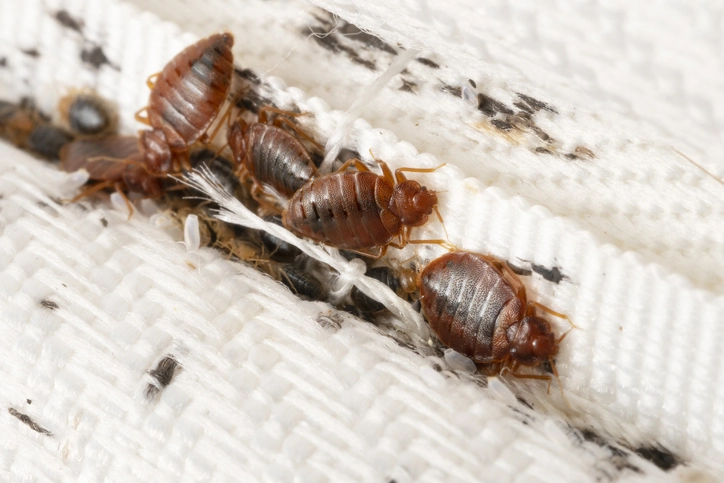Affordable A1 Bed Bug Removal in Houston - Professional Exterminators
Affordable A1 Bed Bug Removal in Houston - Professional Exterminators
Blog Article
Recognizing the Lifecycle of Bugs for Targeted Control Methods
Comprehending the lifecycle of insects is a fundamental element of efficient bug administration methods. By comprehending the various phases of advancement that insects undergo, an extra specific and targeted strategy can be embraced to regulate their populaces. This understanding not only clarifies the susceptabilities within the insect lifecycle but additionally leads the way for implementing critical procedures that can disrupt their development and recreation cycles. With a deeper understanding of just how insects flourish and evolve, customized control strategies can be created to deal with details points in their lifecycle, inevitably causing more successful parasite administration end results.
Relevance of Understanding Bug Lifecycle
Understanding the lifecycle of parasites is necessary for developing effective and targeted control techniques in parasite administration. By understanding the different phases an insect goes with from egg to grownup, parasite control specialists can recognize at risk factors in the lifecycle where intervention can be most successful.
Furthermore, identifying the details ecological conditions needed for every stage of the pest's lifecycle can guide choices on environment adjustment or exclusion methods to minimize and interrupt the lifecycle pest populaces. This understanding enables pest monitoring professionals to execute proactive actions instead than depending solely on responsive therapies, bring about even more sustainable and lasting bug control solutions. Inevitably, a detailed understanding of parasite lifecycles empowers parasite control experts to customize their methods effectively, decreasing environmental influences and optimizing control results.
Trick Stages in Parasite Development
To properly apply targeted control approaches in bug administration, a crucial aspect exists in adequately identifying and understanding the vital phases in bug advancement. Insect development generally consists of numerous crucial stages that are vital for their lifecycle and monitoring.

Susceptabilities in Insect Lifecycle
Throughout the various stages of an insect's lifecycle, distinctive vulnerabilities arise that can be strategically targeted for reliable control steps. One essential vulnerability depends on the egg phase, where insects are commonly more at risk to specific pesticides or organic control agents because of their soft external covering, making them easier targets for intervention. In addition, the nymph or larval stage presents susceptabilities as bugs undertake rapid growth and advancement, calling for high power consumption that can be exploited by disrupting their food sources or presenting development preventions. Pupal phases, characterized by immobility and change, use a home window for targeted control via physical obstacles or specific treatments that hinder successful development. Lastly, grown-up bugs, while a lot more resistant as a result of their reproductive ability, can still be at risk throughout mating or egg-laying tasks, which can be interfered with via scent Continue catches or sanitation strategies. Understanding these susceptabilities in the parasite lifecycle is necessary for creating effective and accurate control techniques that effectively take care of parasite populaces while reducing environmental impact.
Applying Targeted Control Steps

Implementing targeted control measures normally involves a multi-faceted strategy. This might include habitat adjustment to make the setting less welcoming to pests, such as getting rid of standing water for mosquito control or sealing entry factors for rodents. In addition, organic control methods can be used, where natural predators or virus are introduced to maintain insect populaces in check.
Chemical control, such as the mindful application of chemicals, is one more usual strategy. Nevertheless, it is necessary to utilize these compounds judiciously to minimize ecological impact and prospective harm to non-target varieties. Integrated Pest Administration (IPM) strategies that integrate various control procedures in a collaborated and sustainable manner are typically the most effective in achieving lasting pest administration objectives. By applying targeted control actions based upon a complete view it understanding of parasite lifecycles, bug populations can be properly controlled while lessening risks to human health and the environment.
Boosted Insect Management Practices

Moreover, the consolidation of biological control representatives, such as natural killers or microorganisms of bugs, can help in reducing reliance on chemical pesticides and promote a more balanced ecological community. Implementing physical obstacles and traps can likewise be component of boosted parasite monitoring techniques, offering safe and targeted remedies for insect control. Furthermore, using pheromones and other semiochemicals can interrupt pest mating patterns and communication, bring about minimized pest populations in time.
Final Thought
Finally, comprehending the lifecycle of pests is essential for efficient insect management techniques. By determining essential stages in bug growth and susceptabilities in their lifecycle, targeted control steps can be applied to reduce insect populations. Boosted pest management methods can help in reducing the dependence on broad-spectrum chemicals and advertise more eco pleasant and lasting bug control techniques. This expertise plays a crucial function in maintaining healthy and balanced environments and farming productivity.
Recognizing the lifecycle of parasites is essential for establishing reliable and targeted control approaches in insect administration. By comprehending the various phases a pest goes through from egg to adult, insect control professionals can identify susceptible factors in the lifecycle where treatment can be most effective. Ultimately, an extensive understanding of insect lifecycles equips bug control professionals to tailor their methods successfully, decreasing ecological influences and taking full advantage of control results.
By executing targeted control procedures based on a complete understanding of insect lifecycles, pest populaces can be successfully managed while decreasing risks to human wellness and the setting.
By determining essential stages in bug development and susceptabilities in their lifecycle, targeted control measures can be implemented to reduce parasite populations.
Report this page